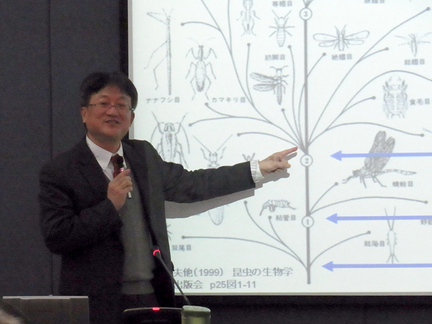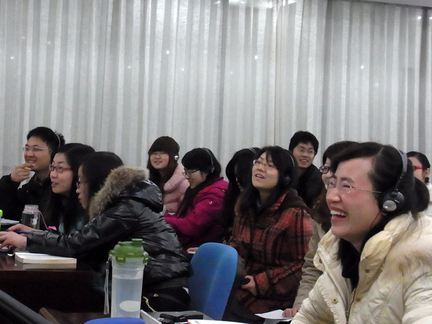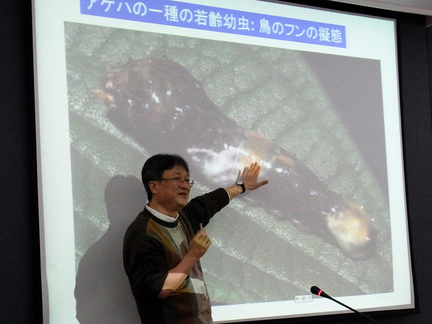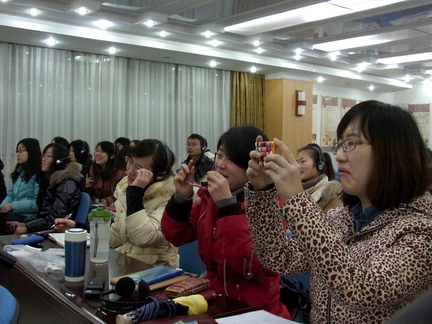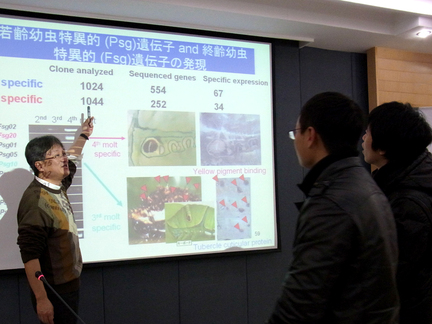I Want to Learn How to Think Beyond Academic Disciplines
Vol.1 2012.03.01 FUJIWARA, Haruhiko
Biology of Insect Camouflage and Metamorphosis
March 1 - 2, 2012
Many of the insects we find in the world, which are as diverse as over a million species, radically transform their shape and figure in the process of their development. Such "transformation" is called metamorphosis, but what kind of molecular mechanisms account for this? On the other hand, apart from ontogeny, which is a short-term "transformation," there is also another kind of "transformation" (evolution) that spans quite a long period of time and has given rise to the diversity among insect species. In particular, insects, being smaller in size than other animals and more prone to predators, have developed a strategy (camouflage) for deceiving their enemies by imitating colors, shapes, behaviors etc. of others. In this lecture, I would like to introduce you to the molecular mechanisms behind those skillful adaptive strategies by insects, by looking at their camouflage and metamorphosis, the two completely different kinds of "transformation."
- Instructor
-

- FUJIWARA, Haruhiko
- Areas of specialty: molecular biology/adaptive evolution studies Professor Fujiwara finished his doctorate at the Department of Biology Sciences, Graduate School of Science, the University of Tokyo in 1986. He holds Ph.D. in Science. After serving at National Institute Health Japan and as Researcher at the Department of Zoology, University of Washington (Seattle, USA), Associate Professor, Graduate School of Science, the University of Tokyo etc., he has served since 2004 as Professor at the Graduate School of Frontier Sciences, the University of Tokyo. His primary research interest is in insects, and he has been working to unravel the molecular mechanisms of camouflage and metamorphosis as well as evolution of telomere and selfish genes from various angles.
- Reference:books
- Fujiwara, H. Deceiving by imitating: The mysterious world of camouflage. Published by Kagaku-dojin (series "DOJIN sensho") in 2007. / ISBN 978-4-7598-9
- Resume Download
Post a Comment
- Other Lessons
